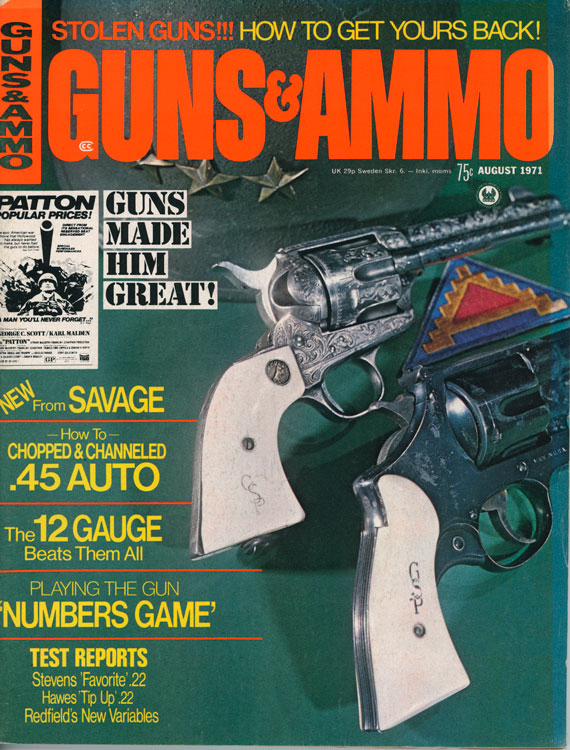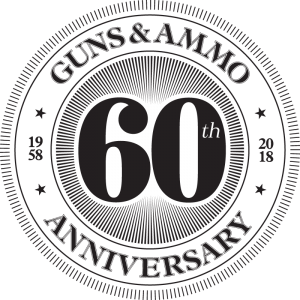
August 1971 Issue of Guns & Ammo
This article originally appeared in the August 1971 issue of Guns & Ammo. Former G&A Senior Staff Editor Whit Collins wrote, “Patton: Guns That Made Him Great.” The revolvers and accoutrements of Gen. George S. Patton were on loan from the U.S. Military Academy at West Point, New York.
More than mere window dressing, General George S. Patton’s pistols were symbols of a sometime maverick’s unwavering dedication to leadership. The ivory-handled pistols that rode on George Smith Patton’s hips may have been the world’s most powerful handguns. They inspired respect and confidence in troops and allies, while they carried forward the image of Patton as a warrior and leader to friend and foe alike. Their role in World War II contributed to the defeat of literally hundreds of thousands of Axis troops.
Although popularly remembered as the “two-gun” General, Patton actually seldom wore both of his “carrying guns” together. And, he owned several personal pistols aside from the two usually photographed on him in WWII. Further, his guns were usually ivory handled, NEVER pearl, as they were sometimes mistaken. The handguns most associated with him, and which are now in the Patton Collection of the West Point Museum, are a .45 Long Colt Single Action revolver, 1873 Army Model, and a .357 Magnum Smith & Wesson revolver.
Of the two of them, aides and relatives have said that the .45 Colt was the one Patton stressed for everyday carry, while the .357 was to be the “killing gun,” in his words, if the battlefield situation ever demanded it. The .45 was his oldest companion, having been purchased in 1916. There are two notches filed in the left-side ivory grip of the highly engraved .45. They came to be through a 1916 gunfight which took place in Mexico.
 When Pancho Villa’s band of “revolutionaries” attacked the little New Mexico border town of Columbus, on March 9, 1916, General “Black Jack” Pershing was sent across the U.S.-Mexico border on the famous Punitive Expedition. Lt. Patton went along as Pershing’s aide, after having all but forced himself on the General. When they crossed the border, the .45 Colt Single Action swung at his right hip.
When Pancho Villa’s band of “revolutionaries” attacked the little New Mexico border town of Columbus, on March 9, 1916, General “Black Jack” Pershing was sent across the U.S.-Mexico border on the famous Punitive Expedition. Lt. Patton went along as Pershing’s aide, after having all but forced himself on the General. When they crossed the border, the .45 Colt Single Action swung at his right hip.
Patton traveled widely in Northern Mexico by touring car, on foraging and information-gathering patrols. Arriving one day at a ranch belonging to the uncle of “General” Julio Cardenas, Patton became suspicious that the Villista leader was in the neighborhood. He decided to mount a raid on a nearby rancho known to have harbored the Mexican.
Patton’s three 1916 Dodge touring cars rumbled straight for the rancho at 50 miles per hour and split up, covering every exit. Under Patton’s leadership, the rancho San Miguelito had been neatly surrounded and flanked, with his nine riflemen in position behind the steel bodies of their cars, before the dust stopped blowing.
In the sharp gunfight that followed, Cardenas and his two “Dorado” bodyguards were killed. Patton

